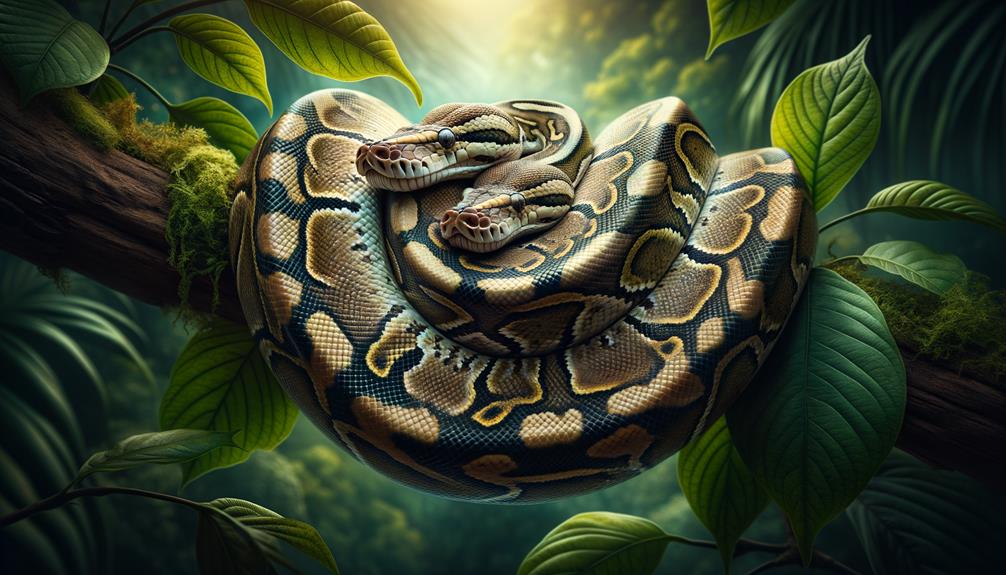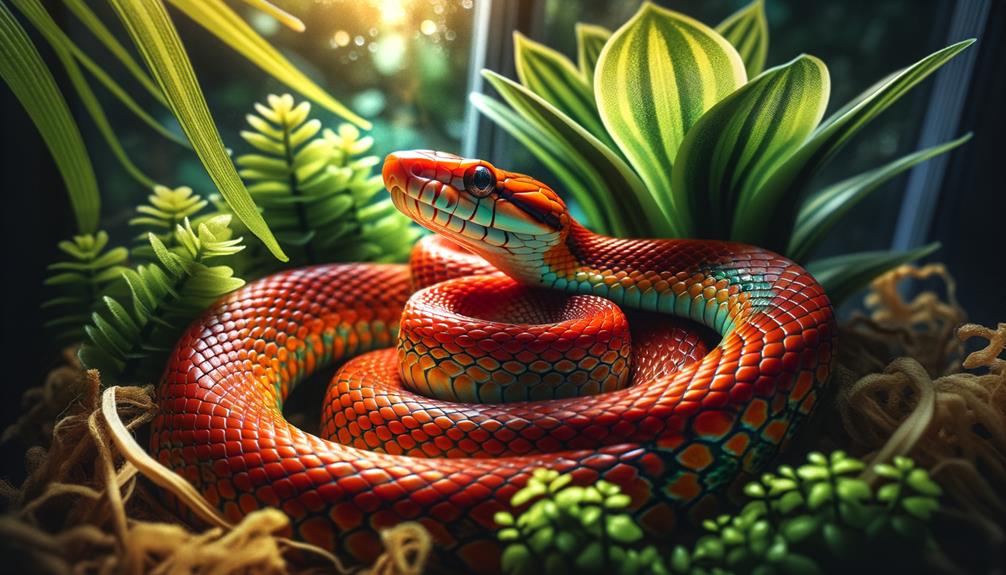Boa constrictors are truly awe-inspiring creatures. These powerful serpents can grow up to 13 feet in length and weigh over 100 pounds. Their remarkable camouflage patterns and heat-sensing pits make them skilled predators. From dense rainforests to urban areas, they’ve adapted to thrive in various environments. By constricting their prey, they carefully monitor the prey’s heartbeat before swallowing it whole. Born self-sufficient, their young ensure the species’ resilience. Unfortunately, habitat loss and the pet trade threaten their survival. It’s crucial that we prioritize conservation and education to protect these incredible animals. As we delve deeper, you’ll uncover even more fascinating facts about boa constrictors.
Key Takeaways
Boa constrictors can grow up to 13 feet in length and weigh a staggering 100 pounds or more.
These snakes subdue their prey by wrapping their powerful bodies around it, monitoring the victim’s heartbeat until it succumbs to the constriction.
Their hunting prowess is enhanced by heat-sensing pits and exceptional eyesight.
The flexibility of their jaws allows them to swallow their prey whole, a testament to their remarkable adaptability.
Their ability to thrive in diverse environments showcases their impressive physical resilience.
Physical Characteristics
Boa constrictors are an impressive species, growing up to 13 feet in length and weighing over 100 pounds, with females typically being larger than males. Their heavy bodies display a distinctive pattern of saddles or rings, providing them with essential camouflage in their diverse habitats. This natural camouflage helps them blend seamlessly into their surroundings, making them expert hunters.
One of the most fascinating features of boa constrictors is their heat-sensing pits, located on their faces. These specialized pits allow them to detect the body heat of potential prey, making them skilled hunters even in low-light conditions. Their sharp vision and the use of their split tongues to navigate and gather sensory information further enhance their predatory skills.
As non-venomous constrictors, boas rely on their muscular bodies to subdue prey. Once they secure their target, they wrap their heavy coils around it, applying pressure with each breath their prey takes until it suffocates. This method of constriction showcases their formidable strength and efficiency as hunters. From hatchlings measuring around 20 inches to adults reaching up to 13 feet, boa constrictors remain a marvel of nature’s design.
Natural Habitat
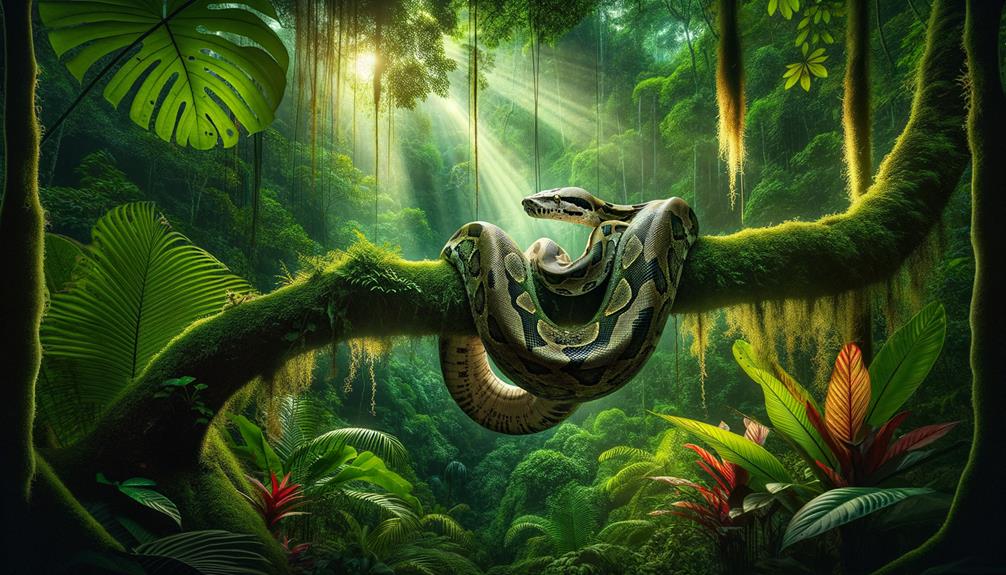
In the dense rainforests of Central and South America, boa constrictors thrive in various environments, from humid swamps to semi-arid grasslands. Native to tropical forests, these powerful serpents can be found throughout Central America, including the Amazon Basin. Their adaptability to different habitats is remarkable, allowing wild populations to flourish in diverse locales.
Boa constrictors prefer dry land but are also skilled in moving through the dense underbrush when necessary. Their ability to thrive in varying local temperatures, from the steamy tropics to cooler semi-arid regions, showcases their physical resilience. It’s fascinating how they’ve adapted to urban environments too, revealing their versatility.
However, habitat loss poses a significant threat to their populations. As tropical forests are cleared for agriculture and urban development, the natural homes of these serpents shrink. This habitat loss affects not only their living space but also their reproductive health, as environmental stress can impact their overall well-being.
Despite these challenges, boa constrictors remain a symbol of nature’s adaptability. Whether traversing the dense underbrush of a rainforest or the dry expanses of grasslands, their presence in Central and South America is a powerful reminder of the wild’s enduring spirit.
Feeding Behavior
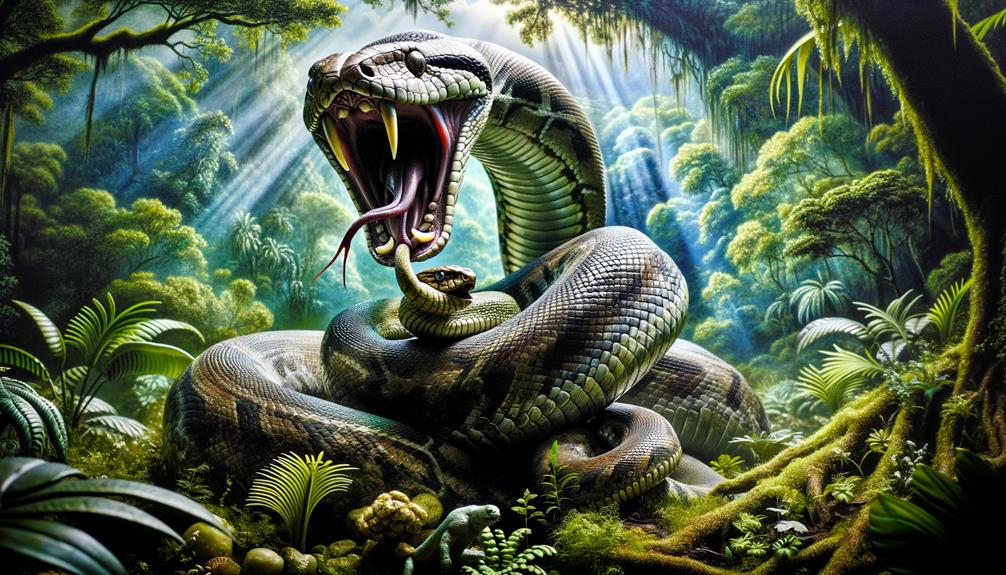
Boa constrictors use their powerful bodies to kill their prey through constriction, a method that involves encircling and squeezing until blood flow is cut off, leading to suffocation. They expertly monitor the victim’s heartbeat to gauge when to tighten or release pressure, ensuring an efficient kill.
Once the prey, which can range from rodents to birds to larger mammals, succumbs to suffocation, the boa begins the feeding process. It’s fascinating to see how they swallow their prey whole, taking advantage of their flexible jaw structure. The absence of bone crushing during constriction simplifies the swallowing and subsequent digestion.
Digestion itself is a slow process, allowing the boa constrictor to extract maximum nutrients over an extended period. This slow digestion means that after a substantial meal, a boa can go weeks without needing to eat again. This remarkable adaptation underscores their efficiency as predators.
Reproduction and Development
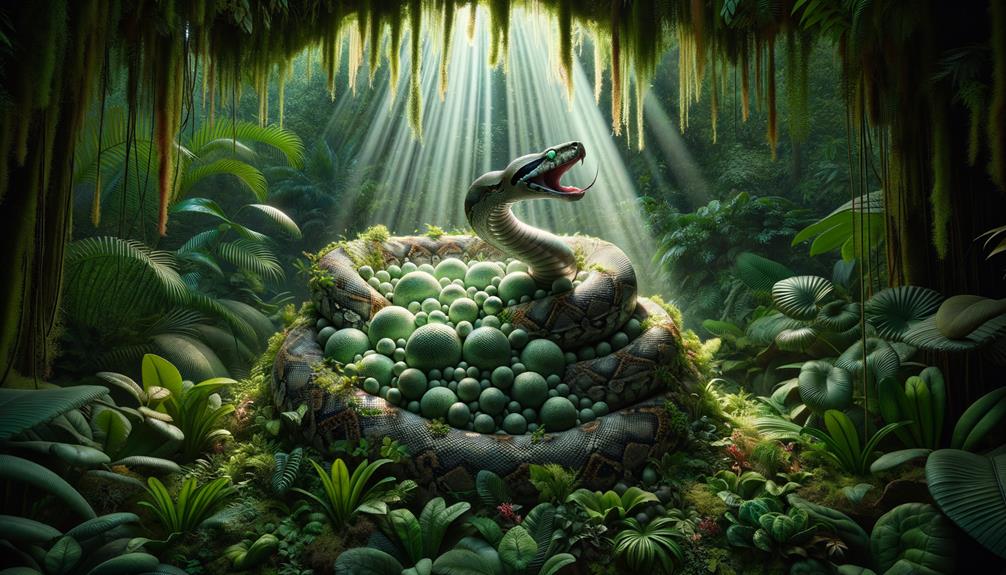
During the warmer months, boa constrictors enter their fascinating reproductive cycle, showcasing their unique ovoviviparous nature. This means they give birth to live young after a gestation period of five to eight months. The breeding season triggers this cycle, with females typically not breeding every year, while males do. When boa constrictors reach sexual maturity around three to four years of age, they start participating in this cycle.
The litter size for boa constrictors can be quite large, ranging from ten to sixty offspring. Occasionally, even more babies are born. These young boas are independent from birth, needing no parental care as they are fully self-sufficient. Here’s an overview of their reproductive process:
- Breeding Season: The warmer months mark the beginning of the breeding season.
- Gestation Period: The females carry their young for five to eight months.
- Live Birth: Females give birth to a litter, usually between ten to sixty offspring.
- Independent Offspring: Newborns are born independent and ready to fend for themselves.
This reproductive strategy promotes the survival and dispersal of their species across various environments, showcasing the adaptability of nature.
Conservation Status
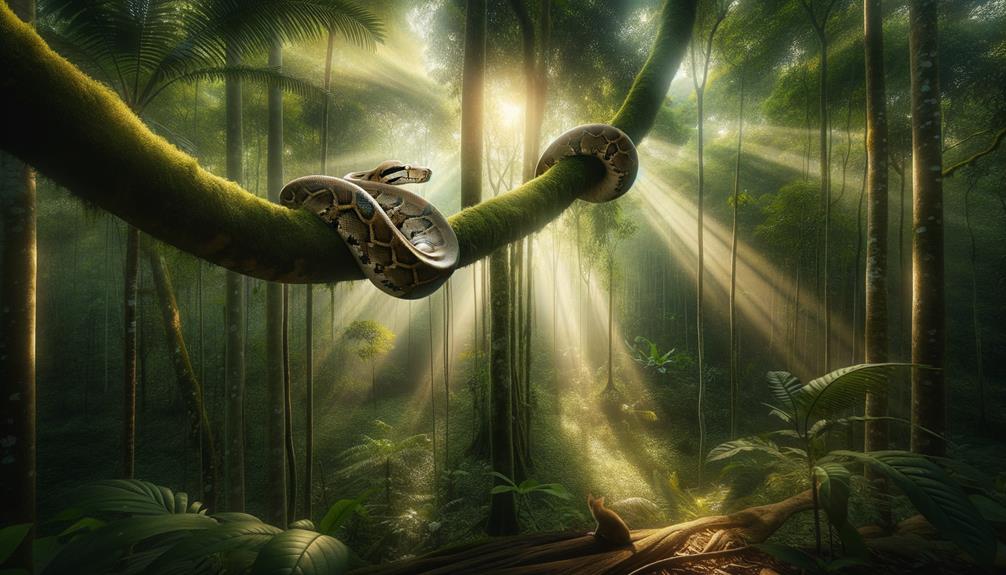
Boa constrictors are facing a growing threat from habitat destruction, the illegal pet trade, and hunting, making their conservation a pressing concern. The relentless expansion of human activities is leading to significant habitat loss, which, combined with the illegal pet trade, is causing alarming declines in boa populations. As a result, some boa species are now listed as vulnerable or even endangered, highlighting the need for effective conservation efforts.
Wild boa constrictor populations play a vital role in maintaining ecological balance, making their protection crucial. Conservation efforts are focused on protecting habitats, tackling poaching, and breeding programs to increase their numbers. The pet trade industry must also adopt sustainable practices. By implementing and enforcing stricter regulations, we can ensure that the trade doesn’t further harm wild populations.
Education and awareness campaigns aim to reduce the demand for wild-caught specimens, promoting captive-bred boas instead. These measures not only help preserve wild populations but also support the sustainability of the pet trade industry. To secure the future of boa constrictors, collaborative global conservation efforts are necessary. Only through concerted actions can we prevent these powerful serpents from slipping further toward extinction.
Frequently Asked Questions
How Powerful Is a Boa Constrictor?
I find boa constrictors fascinating; they can exert a pressure of 13 pounds per square inch, which allows them to subdue prey by stopping blood flow and causing cardiac arrest, showcasing their adaptability and efficiency as predators.
Are Boas Aggressive Snakes?
Boas are not typically aggressive snakes. They’re primarily solitary, nocturnal predators that prefer to hunt alone. However, they can become defensive during shedding. While Central American boas are more irritable, they generally avoid aggression and only strike when they’re under great stress.
What Is the Strongest Constrictor Snake in the World?
The strongest constrictor snake in the world is the green anaconda, which can grow up to nearly 20 feet in length. This massive predator preys on large animals like deer and caimans, using its powerful constriction to subdue and consume them.
What Makes a Boa Constrictor Special?
Boa constrictors are remarkable creatures. One of their most impressive features is their ability to give birth to up to 60 live young in a single litter. Their exceptional hunting skills, which involve lying in wait for unsuspecting prey, make them highly effective predators. By controlling rodent populations, they play a vital role in maintaining the balance of their ecosystems.


